Rhinoplasty in Daejeon
Search and Compare the Best Clinics and Doctors at the Lowest Prices for Rhinoplasty in Daejeon
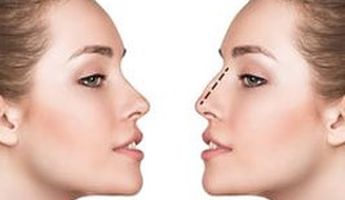
Find the best clinics for Rhinoplasty in Daejeon
With Medijump you can browse 1 facilities offering Rhinoplasty procedures in Daejeon. The cheapest price available is $1,124 in Seoul
Rhinoplasty in South Korea
Price: $ 1,124
Rhinoplasty in Seoul
Price: $ 1,124
Rhinoplasty in Daejeon
Price: $ 3,168
Poland offers the best prices Worldwide
Price: $ 101
From 1 verified reviews
HARRY CHO, 16 March 2019
This hospital is wonderful hospital! Staffs are kind. Doctors are proficient! Price is reasonable!
- Home
- South Korea
- Daejeon
Compare Before & After Photos of _procedure_photos.phpRhinoplasty
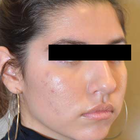

Half-side view


Front view

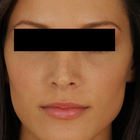
Front view
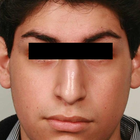
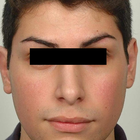
Front view
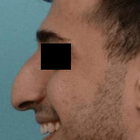

Full-side view
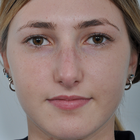
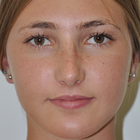
Front view

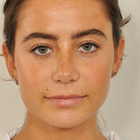
Front view

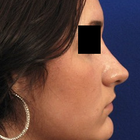
Full-side view
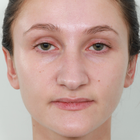
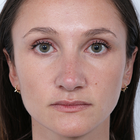
Front view
WHY US?
At Medijump, we're making medical easy. You can search, compare, discuss, and book your medical all in one place. We open the door to the best medical providers worldwide, saving you time and energy along the way, and it's all for FREE, no hidden fees, and no price markups guaranteed. So what are you waiting for?

Free

Best Price

Widest Selection

Risk-Free
What you need to know about Rhinoplasty in Daejeon

Rhinoplasty, commonly known as the “nose job,” is plastic surgery to change the shape of the nose and to improve its function. This procedure can be performed for medical and cosmetic reasons. Those with breathing problems caused by a birth defect, deviated septum, sinusitis, or an injury to the nose, as well as those who are not happy with the appearance of their nose, can undergo rhinoplasty.
Rhinoplasty has a number of benefits. However, the most compelling reason for patients to have this surgery is to improve the appearance of their noses, which can boost their self-esteem significantly. Besides altering the form and size of your nose, the procedure can also strengthen the bridge, narrow the nostrils, and reshape the tip.
While anyone can undergo rhinoplasty, teenagers are advised to wait until their nose has reached its adult size.
What does a Rhinoplasty Procedure Involve?
During rhinoplasty, you will be given local or general anesthesia to make sure that you are comfortable and you don't feel any pain. Your surgeon might perform the procedure inside your nose or through an incision at the base of your nose.
Changing the shape of your nasal bones or cartilage can be done in several ways, depending on how much needs to be added or removed, available materials, and your nose’s structure.
If your nose needs to be augmented because you want to increase its size, prosthetic implants or cartilage from your nasal septum or ear is used. Once your surgeon is done altering the shape of your nose and correcting any defect, they will place the nose’s skin and tissue back, then close the incisions with stitches.
How Long Should I Stay in Daejeon for a Rhinoplasty Procedure?
Depending on the complexity of the procedure and the type of anesthesia used, you may be able to leave the hospital on the same day or stay in the hospital for a day or two. The surgery itself takes around 1.5 to 3 hours to complete. Once you are discharged from the hospital, you should not leave Daejeon right away. Instead, plan to stay about 10 to 14 days for initial recovery and follow-up checkups. A week following the surgery, your surgeon will remove your stitches.
What's the Recovery Time for Rhinoplasty Procedures in Daejeon?
You generally need to wait at least 2 to 3 weeks until you can resume most of your normal activities. However, you should not perform any strenuous activities, such as intense exercise, for about 3 to 6 weeks. During the first few days after the surgery, you will experience some swelling around your eyes, but these will subside within 3 to 14 days. You will also have to wear a nasal splint for about a week following the surgery.
What sort of Aftercare is Required for Rhinoplasty Procedures in Daejeon?
Since you may experience some discomfort, your surgeon will give you painkillers to ease any pain and discomfort. Make sure to take the pain medication as prescribed. For a couple of weeks following the surgery, you should not blow your nose, as well as laughing or talking too much. You also need to avoid any clothes that need to be pulled over your head and glasses on your nose for a few weeks. Always make sure to cover your nose while going out in the sun during your recovery period.
It's important that you avoid bumping or hitting your nose, and keep your nose safe and protected from anything that could misalign the bones and undo the results. To help you recover smoothly and quickly, eat healthy and nutritious food.
What's the Success Rate of Rhinoplasty Procedures in Daejeon?
Rhinoplasty is considered one of the most complicated facial cosmetic surgeries. However, thanks to the advances in technology and surgeons’ extensive experience, the procedure has a very high success rate of between 85% and 90%.
Although rhinoplasty is generally safe, it does carry some potential risks of complications and side effects, including bleeding, infection, allergic reaction to the anesthesia, permanent numbness in your nose, difficulty breathing through the nose, an uneven-looking nose, discoloration, persisting pain, scarring, septal perforation, and a need for additional surgery.
Are there Alternatives to Rhinoplasty Procedures in Daejeon?
If you are unable to undergo rhinoplasty, you can opt for its minimally invasive or noninvasive alternatives, such as filler injections or Botox. Both filler injections and Botox are noninvasive and require only a very short visit with your doctor. It works by injecting the substance into your nose to change its shape. Many people choose these methods because it is not as painful as rhinoplasty, requires little to no downtime, and no incision or stitches are involved.
If you want to improve your breathing, you may be recommended to use nasal strips. The nasal strip is a type of bandage with adhesive-embedded splints or plastic ribs that is applied across the bridge of the nose and the sides of the nostrils. It can keep the airway open, making breathing easier.
Whilst the information presented here has been accurately sourced and verified by a medical professional for its accuracy, it is still advised to consult with your doctor before pursuing a medical treatment at one of the listed medical providers
No Time?
Tell us what you're looking for and we'll reachout to the top clinics all at once
Enquire Now

Popular Procedures in Daejeon
Prices Start From $404

Prices Start From $1,945

Prices Start From $192

Prices Start From $500

Recommended Medical Centers in Daejeon for Rhinoplasty

- Interpreter services
- Translation service
- Religious facilities
- Medical records transfer
- Medical travel insurance
- Health insurance coordination
- TV in the room
- Safe in the room
- Phone in the room
- Private rooms for patients available

- Interpreter services
- Translation service
- Religious facilities
- Medical records transfer
- Medical travel insurance
- Health insurance coordination
- TV in the room
- Safe in the room
- Phone in the room
- Private rooms for patients available

- Interpreter services
- Translation service
- Religious facilities
- Medical records transfer
- Medical travel insurance
- Health insurance coordination
- TV in the room
- Safe in the room
- Phone in the room
- Private rooms for patients available

- Interpreter services
- Translation service
- Religious facilities
- Medical records transfer
- Medical travel insurance
- Health insurance coordination
- TV in the room
- Safe in the room
- Phone in the room
- Private rooms for patients available

- Interpreter services
- Translation service
- Religious facilities
- Medical records transfer
- Medical travel insurance
- Health insurance coordination
- TV in the room
- Safe in the room
- Phone in the room
- Private rooms for patients available

- Interpreter services
- Translation service
- Religious facilities
- Medical records transfer
- Medical travel insurance
- Health insurance coordination
- TV in the room
- Safe in the room
- Phone in the room
- Private rooms for patients available

- Interpreter services
- Translation service
- Religious facilities
- Medical records transfer
- Medical travel insurance
- Health insurance coordination
- TV in the room
- Safe in the room
- Phone in the room
- Private rooms for patients available

- Interpreter services
- Translation service
- Religious facilities
- Medical records transfer
- Medical travel insurance
- Health insurance coordination
- TV in the room
- Safe in the room
- Phone in the room
- Private rooms for patients available

- Interpreter services
- Translation service
- Religious facilities
- Medical records transfer
- Medical travel insurance
- Health insurance coordination
- TV in the room
- Safe in the room
- Phone in the room
- Private rooms for patients available

- Interpreter services
- Translation service
- Religious facilities
- Medical records transfer
- Medical travel insurance
- Health insurance coordination
- TV in the room
- Safe in the room
- Phone in the room
- Private rooms for patients available
Rhinoplasty in and around Daejeon
About Daejeon
With a population of around 1.5 million people, Daejeon is the 5th largest city in South Korea. Due to its location in the center of Korea, it is a major transit hub for the region. It’s an important science and education center, with more than 200 research institutes located within its area. As South Korea’s medical tourism continues to flourish, Daejeon has undertaken strategic development to grow its medical tourism industry. The city is establishing its healthcare system by providing outstanding medical technology both in the private and public sector, improving its medical services, carrying out overseas marketing activities, as well as developing medical tourism products and medical tourism coordinators.
Popular Parts of Daejeon
The most popular part of Daejeon is Yuseong-gu, the administrative district in the northwest part of the city. It is home to Yuseong hot springs resort town, where visitors can find a hot spring that can counter many types of illnesses. The hot spring contains alkaline minerals, such as sulfur, calcium, potassium, silicic acid, and radium. An especially high concentration of radium is found in the hot spring, which is known to be good for neuralgia and geriatric diseases. Around the area of Yuseong hot springs resort town are upscale shopping areas, accommodation, as well as numerous cultural centers and sightseeing places. Another popular area is Dunsan, the city’s central business district filled with shops and restaurants. Besides these two areas, there several popular places for sightseers, including the mountains Sikjangsan and Jangtaesan, the lake Daecheonghosu, Expo Science Park, and Daejeon O-World.
Transport in Daejeon
The international airport serving Daejeon is the Cheongju International Airport, which is located in Cheongwon-gu. It has several flights to and from cities in Asia. However, most international tourists arrive at Incheon International Airport and travel to the city with a shuttle bus from the airport or a KTX express train from Seoul. The most convenient and affordable way to get around Daejeon is by inner-city bus and the subway. Visitors can buy T-money travel cards to reduce the fares of the bus and subway. Taxis are available, but make sure to avoid unregistered taxis.
Visas in Daejeon
Holders of passports from 112 countries, including the EU, the US, and Russia, can visit Daejeon without a visa for 30, 60, and 180 days. Citizens of other countries not listed in the visa-free entry should apply and obtain a visa prior to their visit.
Weather in Daejeon
There are four seasons in Daejeon. Summer, starting from June to August, is typically hot and rainy. From September to late November is autumn, which has pleasant weather. Winter, from late November to March, can be freezing. The temperature will slowly rise in spring, but rainfall is more common.
Additional Info
- Local Currency: The official currency in Daejeon is South Korean Won (KRW). 1 USD is approx. 1,185 KRW.
- Money & Payments: ATMs accepting international cards are widely available. Credit cards are accepted at many restaurants, hotels, and shops. Tipping is not expected and can be considered rude in restaurants. However, it is okay to tip guides and porters.
- Local Language: Korean is the official language, with Hangul as the formal script. English is mostly spoken in tourist areas.
- Local Culture and Religion: Around 47% of the population is not religious or follows indigenous religions. Buddhism and Christianity are freely practiced.
- Public Holidays: New Year’s Day, Independence Day, and the Birthday of Buddha are some of the important public holidays in Daejeon.
Popular Searches
- Plastic Surgery in Thailand
- Dental Implants in Thailand
- Hair Transplant in Thailand
- Breast Augmentation Thailand
- Gastric Sleeve in Thailand
- Gender Reassignment Surgery in Thailand
- Laser Hair Removal in Bangkok
- Botox in Bangkok
- Dermatology in Bangkok
- Breast Augmentation in Bangkok
- Coolsculpting in Bangkok
- Veneers in Turkey
- Hair Transplant in Turkey
- Rhinoplasty in Turkey
- Stem Cell Therapy in Mexico
- Rhinoplasty in Mexico
- Liposuction in Mexico
- Coolsculpting in Tijuana
- Rhinoplasty in Korea
- Scar Removal in Korea
- Gastric Sleeve in Turkey
- Bone Marrow Transplant in India
- Invisalign in Malaysia
- Plastic Surgery in the Dominican Republic
- Tummy Tuck in the Dominican Republic
- Plastic and Cosmetic Surgery in Poland
- Rhinoplasty in Poland
- Hair Implant in Poland
- Dental Implants in Poland
- IVF in Turkey
